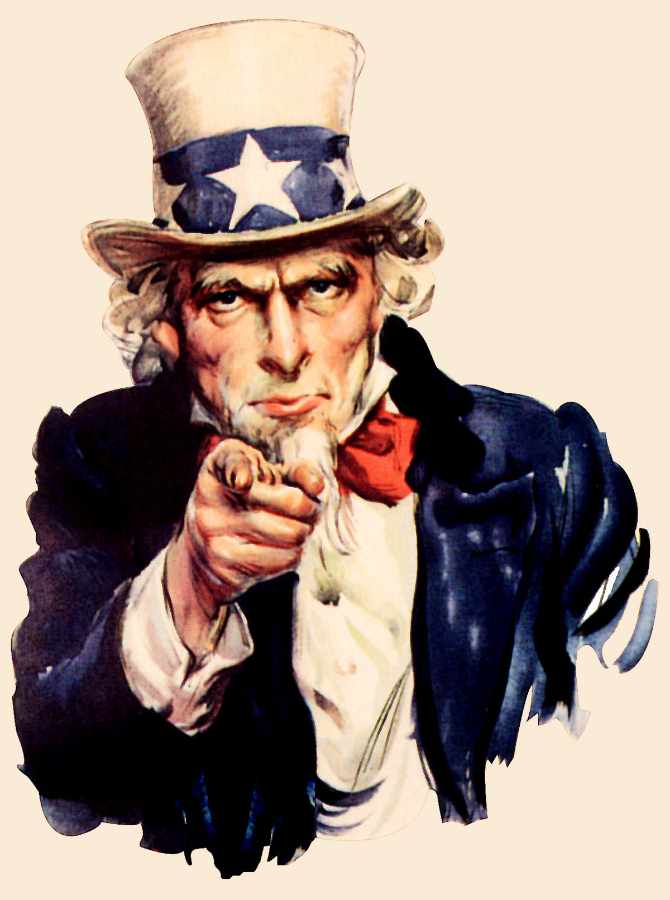Uncle Sam (which has the same initials as United States) is a common national personification of the federal government of the United States or the country in general. Since the early 19th century, Uncle Sam has been a popular symbol of the U.S. government in American culture and a manifestation of patriotic emotion. Uncle Sam has also developed notoriety for his appearance in military propaganda, popularized by a famous 1917 World War I recruiting poster by J.M. Flagg. According to legend, the character came into use during the War of 1812 and may have been named for Samuel Wilson. The actual origin is obscure. The first reference to Uncle Sam in formal literature (as distinct from newspapers) was in the 1816 allegorical book The Adventures of Uncle Sam, in Search After His Lost Honor by Frederick Augustus Fidfaddy, Esq. While the figure of Uncle Sam specifically represents the government, the female figure of Columbia represents the United States as a nation. An archaic character, Brother Jonathan, was known to represent the American populace.
| Alias Uncle Sam |
| Real Names/Alt Names Uncle Sam |
| Characteristics Personification, Patriot-themed, Romantic Age |
| Creators/Key Contributors J. M. Flagg (poster) |
| First Appearance War of 1812 (term) / 1852 (art) |
| First Publisher US Government (poster) |
| Appearance List Niles’ Weekly Register vol. 7 (p. 187, 1815), The Clockmaker, Or the Sayings and Doings of Sam. Slick of Slickville: To which is Added, the Bubbles of Canada, by the Same Author by Thomas Chandler Haliburton (1839), “A Bit of Advice” in The Lutheran Witness (December 7, 1893), “Uncle Sam” in Proceedings of the American Antiquarian Society vol. 19 by Albert Matthews (pp. 21–65, 1908), Flag day; its history by Robert Haven Schauffler (1912), The Story of Uncle Sam: Godfather of America by Thomas I. Gerson (March 1959) |
| Sample Read The Adventures of Uncle Sam – In Search After His Lost Honor [GB] |
| Description Uncle Sam (which has the same initials as United States) is a common national personification of the federal government of the United States or the country in general. Since the early 19th century, Uncle Sam has been a popular symbol of the U.S. government in American culture and a manifestation of patriotic emotion. Uncle Sam has also developed notoriety for his appearance in military propaganda, popularized by a famous 1917 World War I recruiting poster by J.M. Flagg. According to legend, the character came into use during the War of 1812 and may have been named for Samuel Wilson. The actual origin is obscure. The first reference to Uncle Sam in formal literature (as distinct from newspapers) was in the 1816 allegorical book The Adventures of Uncle Sam, in Search After His Lost Honor by Frederick Augustus Fidfaddy, Esq. While the figure of Uncle Sam specifically represents the government, the female figure of Columbia represents the United States as a nation. An archaic character, Brother Jonathan, was known to represent the American populace. |
| Source Uncle Sam – Wikipedia |

